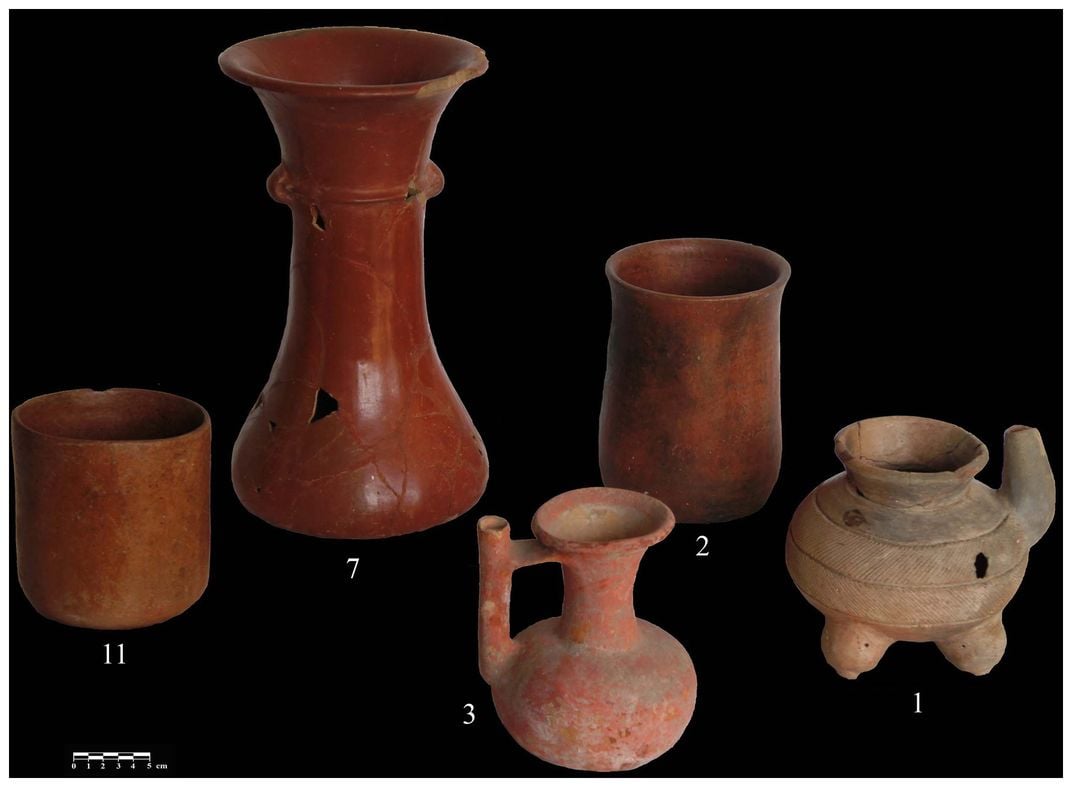People in Mexico Were Using Chili Peppers to Make Spicy Drinks 2400 Years Ago
New analysis of the insides of ancient drinkware shows chemical traces of Capsicum species, proof positive that its owners made spicy beverages
/https://tf-cmsv2-smithsonianmag-media.s3.amazonaws.com/filer/02/d5/02d5d8fb-35a8-4478-b498-3029449083ca/chili_peppers.jpg)
When they scraped tiny samples out of the inside of each of the vessels, used chemical solvents extract organic compounds, and analyzed them with liquid chromatography testing, they found dihydrocapsaicin and other irritants that serve as evidence that Capsicum species, the taxonomic group that includes spicy chili peppers, once filled five of the vessels. Based on the vessels’ shape and prior archaeological work on the Mixe-Zoquean culture, the researchers believe they were used for all sorts of liquids—likely beverages, but perhaps condiments or sauces.
Previously, research by Smithsonian scientists had shown that chili peppers were domesticated much earlier—perhaps as far back as 6000 years ago—in Ecuador. This new research, however, is the oldest evidence of chili pepper use in Central North America, and the first known instance of their use in ancient beverages, rather than in solid food.
Interestingly, the researchers originally began the project looking for evidence of the ancient use of cocoa beans in beverages. But their testing didn’t reveal any traces of cocoa left behind in the vessels, suggesting that the tradition of spicy drinks came first, and chocolate flavoring was only added to such drinks later on.
Other contextual evidence also suggests that the spicy drink of in Mixe-Zoquean culture differed significantly from the spiced hot chocolate enjoyed in Mexico today. Three of the vessels were found buried in the tombs of elite-status individuals, while the other two were excavated from temple-like structures. This context, they say, suggests that the beverages might have been used in ceremonial and ritual circumstances.
The authors note that this doesn’t rule out the possibility that the beverages were commonly drunk as well—a more thorough survey of vessels would need to be conducted to know for sure. Additionally, the researchers speculate that rather than a flavoring, chili peppers might have been ground up into a paste and coated on the walls of vessels as an insect and vermin repellent. If that was indeed the case,then bless the serendipity of whoever put liquidy chocolate into one of those vessels and created the wonder that is spicy hot cocoa.

Espresso was invented 129 years ago. Bourbon dates back to the late 1700s. The creation of the wine we now call champagne occurred still earlier, around 500 years ago in northeastern France.
None of these drinks, though, has anything on the tradition of drinking spicy beverages in Mexico. A new analysis of ancient pottery unearthed from archaeological sites near Chiapa de Corzo, in southern Mexico, shows that people were using chili peppers to make their drinks spicy as far back as 400 BC.
The analysis, conducted by a group of researchers led by Terry Powis of Kennesaw State University, was published today in PLOS ONE. As part of the study, the scientists chemically tested 13 pottery vessels that had been excavated from a series of sites in the area linked to speakers of the Mixe-Zoquean group of languages—closely related to the language of the Olmec civilization—and were previously dated to years ranging from 400 BC to 300 AD.
/https://tf-cmsv2-smithsonianmag-media.s3.amazonaws.com/accounts/headshot/joseph-stromberg-240.jpg)
/https://tf-cmsv2-smithsonianmag-media.s3.amazonaws.com/accounts/headshot/joseph-stromberg-240.jpg)